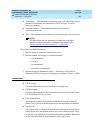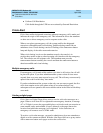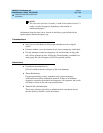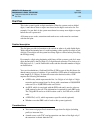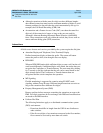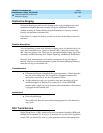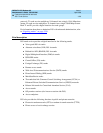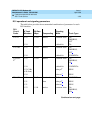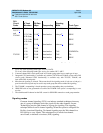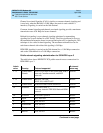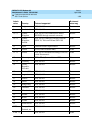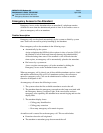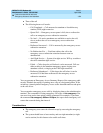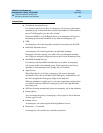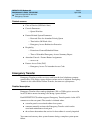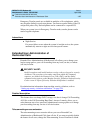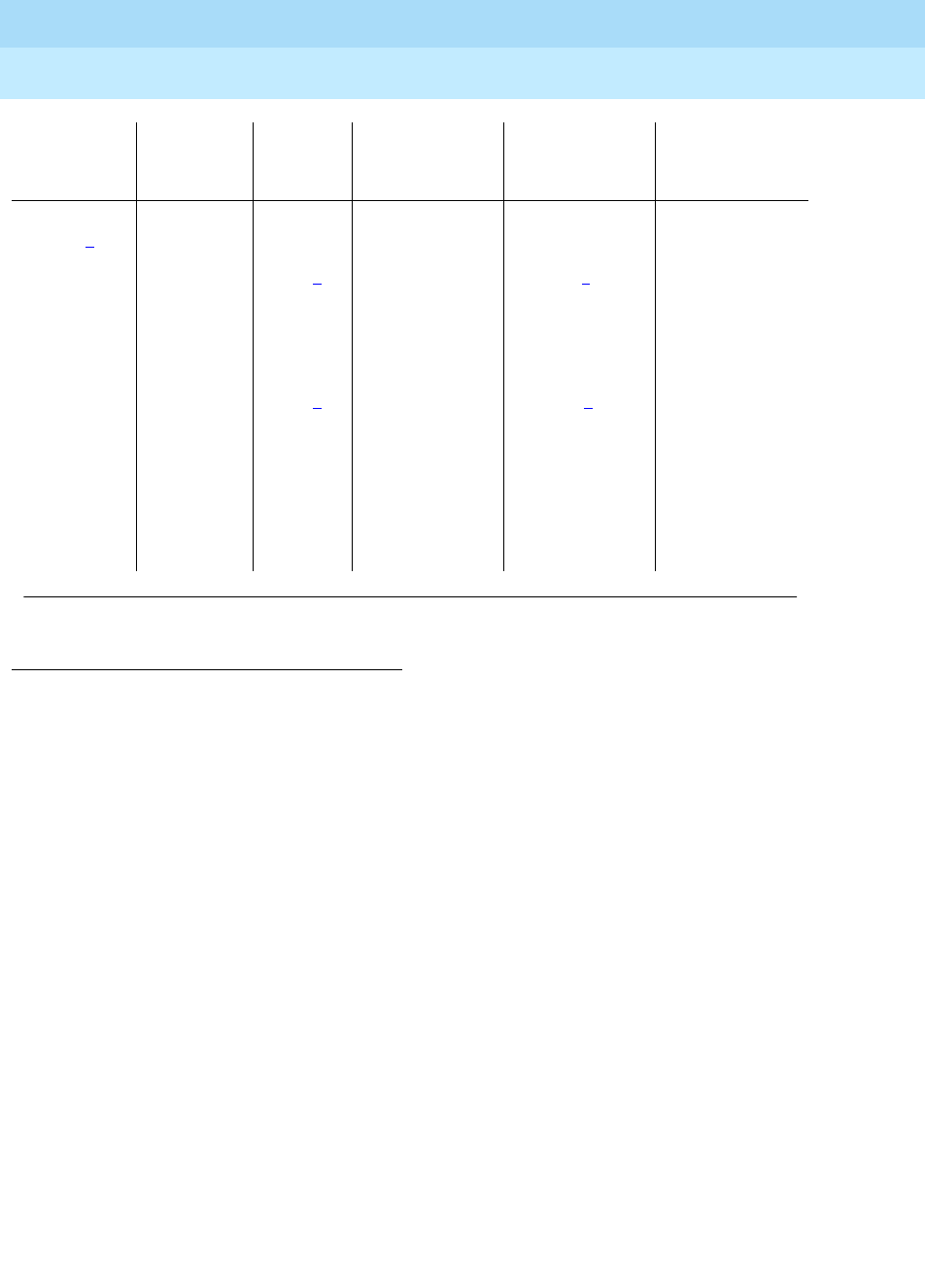
DEFINITY ECS Release 8.2
Administrator’s Guide
555-233-506
Issue 1
April 2000
Features and technical reference
1320DS1 Trunk Service
20
Signaling modes
Common-channel signaling (CCS) is an industry-standard technique where any
one of a group of channels carries the signals for the other channels. Lucent
Technologies uses the 24th channel of a group for signaling. This signaling
technique differs from 24-channel signaling. When the system is configured for
Facility-Associated Signaling, 24-channel signaling uses the 24th channel in a
DS1 facility to carry signals. This technique also is called clear channel,
out-of-band, or alternate voice data (AVD) signaling.
TN464C,
D, E, F
3
,
and
TN2464
1-24
1-23 (24th
is D-chan)
1-31 (16th
is D-chan)
1-24
1-31
1-30
1.544
4
2.048
1.544
4
2.048
2.048
alaw/mulaw
alaw/mulaw
alaw/mulaw
robbed-bit
isdn-pri
4
isdn-ext
4
CAS
CO/DID/Tie
ISDN
ISDN
ISDN
CO/DID/Tie
TN2242 1-30
1-30
7
2.048
2.048
alaw/mulaw
alaw/mulaw
CAS
isdn-pri
Tie
ISDN
1. CO is any of the following trunk types: CO, FX, WATS.
Tie is any of the following trunk types: access, tie, tandem, RLT, APLT.
2. Common-channel DS1 circuit packs used in CO trunk groups must have a trunk type of auto.
3. Integrated CSU functionality is available only with the TN767D and TN464E or later-suffix DS1
circuit packs. Enhanced ICSU functionality is available only with TN767E, TN464F, and
later-suffix DS1 circuit packs.
4. Mixed-mode signaling is allowed. This means that if the signaling mode is isdn-ext or isdn-pri, a
port from that circuit pack may be used in any trunk group that allows robbed-bit signaling.
5. The TN464B’s companding is based upon the system companding that you administer.
6. ISDN-PRI calls are not guaranteed to work for the TN464B if the system’s companding is set to
mu-law.
7. The administered D-channel on the DS1 screen for ISDN-PRI cannot be a trunk group member.
DS1
Circuit
Packs
# Trunk
Members
Bit Rate
Mbps Companding
Signaling
Mode Trunk Type
1
Continued on next page



